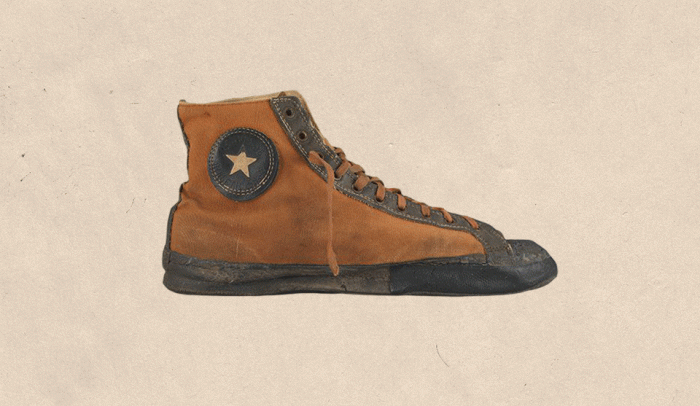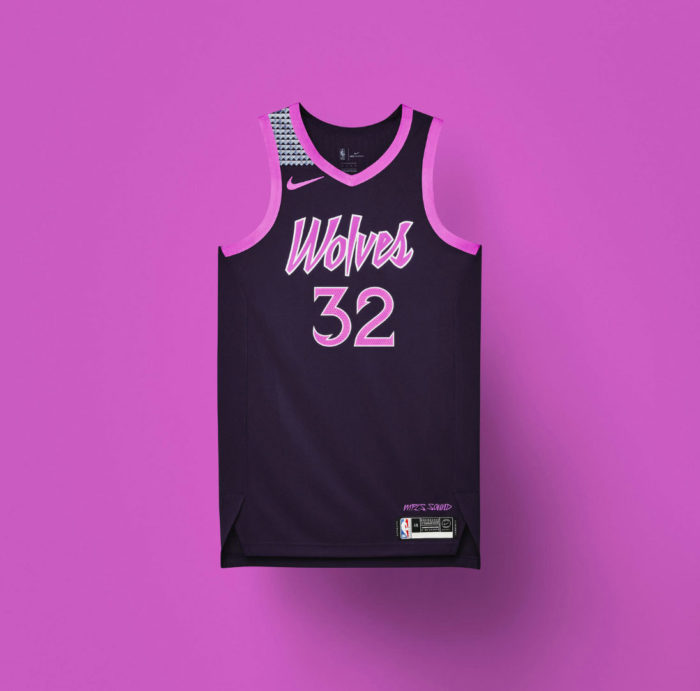Of all the places we carry stories these days—from books and films to podcasts and video games—our shoes would certainly be the most unconventional. Yet for decades, this has been the medium of choice for footwear designers at Nike. Their cutting-edge shoes—functional sculptures, made of leather, rubber, and laces—have become one of the most unexpected storytelling vehicles of our time.
Like the mythological tales of Greek warrior-heroes and their epic journeys filled with heart-wrenching tragedies and awe-inspiring triumphs, the stories of modern athlete-heroes also deserve to be told. It was perhaps inevitable that a footwear company that takes its name from Greek mythology should bring us these stories.
This is how Nike did it.
Finding a Fit
“To be a good storyteller one must be gloriously alive,” said author Ruth Sawyer in her 1942 book The Way of the Storyteller. “It is not possible to kindle fresh fires from burned-out embers.”
In the summer of 1987, 35-year-old architect-turned-sneaker-designer Tinker Hatfield was struggling restlessly to design a compelling basketball shoe that would satisfy the taste of a very picky Michael Jordan. By that time, Jordan was emerging as a special talent, but he was not yet the icon that he’s known to be today. With his Nike contract coming to an end and lingering frustrations over the first two iterations of his Air Jordan sneaker, the All-Star was considering ending his relationship with the company.
After weeks of sleepless nights, Hatfield finally had his aha moment. He came up with the one thing he knew would connect Michael to the shoe and convince him to stay with Nike: a shoe that told the story of becoming the Greatest of All Time.
The Making of the Air Jordan 3
Introduced on the court and in stores the very next season, the Air Jordan III was the first shoe to be designed around the performance needs of a player while seamlessly blending style and narrative. It was the first pair of Jordans to feature a visible Nike Air unit in the heel, an elephant print-inspired trim, and a tumbled leather upper as a nod to MJ’s fashion sensibilities. It also introduced the now-iconic Jumpman silhouette logo.
Michael grinned from ear to ear when he held the shoe for the first time. To this day, the Jordan III remains his favorite.
“Tinker was at the forefront of literally every innovation in the footwear industry, often creating or driving it himself,” explains Nick DePaula, the former creative director of sneakerhead magazine Nice Kicks who now writes for ESPN. “The way in which he drafted off of Michael’s personal tastes, closely guarded nicknames like the ‘Black Cat,’ and took cues from his love of sports cars truly changed the footwear industry.”
As the vice president for design and special projects in Nike’s top-secret Innovation Kitchen, Hatfield has put together a storytelling formula that appears in the design of nearly every signature shoe created by the company today.
And while today’s best players continue to push the sport forward with innovative playing styles, Nike designers are responding by raising the bar each year to create designs that take both athlete inspiration and technology to new storytelling heights. In any conversation about innovative playing styles and compelling backstories during the last 10 years, it would be difficult to avoid mentioning Giannis Antetokuonmpo, Kevin Durant, and LeBron James—all of whom have had their stories told through their signature shoes.
The Zoom Freak 4 “Greek Coastline” — Giannis Antetokuonmpo
This colorway of the Greek Freak’s signature line checks the boxes for both parts of his nickname. The bold green-and-black scheme reminds Giannis of one of his favorite seaside getaways back home. His logo, meanwhile, creates a maze-like negative space that draws inspiration from the hero’s journey in Greek mythology. The sneaker is built to support Antetokuonmpo’s long strides, with Zoom Air units positioned at a four percent tilt for explosive movement. These kicks give him stability for rapid shuffling on defense and for Euro steps in the lane on the other end. But there’s a simpler reason the sneaker suits him: “It helps me dunk on people,” he said.
The KD VI “Seat Pleasant” — Kevin Durant
In order to find the right headspace for the 2013 edition of Durant’s signature shoe, Nike Senior Footwear Designer Leo Chang and Color Designer Eugene Rogers visited Kevin Durant’s Maryland hometown. After visiting the Seat Pleasant Activity Center, a public recreation center where Durant learned to play basketball, the designers found the inspiration they needed and decided to focus on his quick and precise playing style—a style that Chang likened to a well-crafted watch. Unsurprisingly, the resulting signature shoe was modeled with precision and craftsmanship, featuring a teal and yellow colorway inspired by the Activity Center. During the season, the company unveiled other colorways inspired by Durant’s childhood—one reflected his love for PB&Js, while another nodded to his fascination with outer space.
The LEBRON 11 “Terracotta Warrior” — LeBron James
For the LEBRON 11, Nike designers recalled Lebron James’ fascination with the Terracotta Warriors he had seen on a 2011 visit to Xi’An, China. Particularly, King James took a particular liking to the warrior’s spirit of “grit, confidence, hard work, and determination.” Taking inspiration from the stone sculptures, the designers combined the aged neutral stone color with the bright purple, teal, and red hues they were originally painted as with a faceted warrior armor-like plating covering the shoe. The interior of this 2013 shoe—a jungle scene—suggested a lion, the apex predator that James tries to channel during games. These features, combined with subtle elements that hinted at his hometown of Akron, Ohio, told the story of an ever-evolving player looking to the past to lead his future.
So whether a shoe is inspired by a significant experience or place, or a career-shaping moment for a future All-Star, or whether it simply taps into an energy that helps fuel performance, it tells a story. The use of storytelling in footwear design elevates an otherwise bleak product to greater heights, and it becomes a unique, multidimensional experience for the players and for those who aspire to be like them.
An Unconventional Formula That Works
There’s no magical crystal ball to show us what tomorrow will hold, but it’s clear that for Nike, drawing on compelling stories from the past to help shape the future has been an unconventional formula for success.
“We’ll continue to see signature detailing stories throughout the industry and storytelling will maybe take on bigger issues, as players are looking to utilize their platform for a bigger social purpose,” adds DePaula. “We’re starting to see some players highlighting the value of uplifting your community and your friends.”
As society changes, it’s inevitable that the stories we tell—and how we tell them—will continue to change and morph into new forms. But just like the stories told about legendary Greek heroes, today’s stories are about conveying a message and enhancing the human experience.
And perhaps now, more than ever, some of these stories need to be told.



